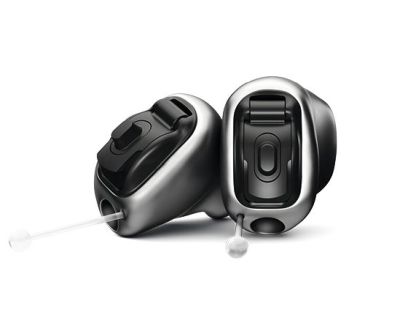
Invisible Hearing Aids
At HAB Hearing we are regularly asked for information about addressing hearing loss. Sometimes people are new to hearing aids and sometimes they are looking to upgrade their existing hearing aids. A really common request we hear is for ‘invisible hearing aids’.
‘Invisible’ translates in hearing aid speak as ‘IIC’, an acronym for ‘invisible in canal’. This desire for invisible hearing aids seems to crop up more with people new to hearing aids. When people have worn hearing aids for a few years or more the focus often moves more towards the performance aspect of hearing aid technology with less emphasis on the cosmetic aspect…. but not always.
The factors to consider when looking into IIC invisible hearing aids
In the supply of IIC hearing aids there are factors to consider when you ask for our advice as hearing professionals. Whether IIC hearing aids are suitable and appropriate for you as an individual depends on a number of factors including but not limited to;
- Your type and level of hearing loss.
- The shape and size of your ear canals (narrow, bendy or very waxy ear canals can rule out IIC).
- The technological features you are looking for.
- The price range you can / want to consider.
We can steer you through these tricky considerations. We have access to the whole wide range of IIC hearing aids available UK wide. (Unlike for instance the national high street retailers – they tend to have have limited ranges).
All the manufacturers we deal with offer the most discreet IIC invisible hearing aid style.
Pros and cons of invisible hearing aids
Some of the features found in current hearing aid technology are not available in the IIC format. This is due to the compromises that necessarily need to be made – between cosmetics and function. With an IIC you may need to sacrifice certain aspects of the technology you might want to take advantage of otherwise.
 If you are considering this type of hearing aid you might want to weigh up which is more of a priority for you. Directional microphones (helpful in combating background noise) are not available. Wireless features are not generally available in IIC hearing aids in the main.
If you are considering this type of hearing aid you might want to weigh up which is more of a priority for you. Directional microphones (helpful in combating background noise) are not available. Wireless features are not generally available in IIC hearing aids in the main.
Over time we do expect more IIC hearing aids to become wireless compatible. The limited space available on an IIC faceplate though hampers the possibility of directional microphones. If that feature is important to you then maybe you need to look at a different format.
IIC invisible hearing aids do tend to be a little more prone to breakdown too, you should potentially factor this into your decision making process. They sit deep in the ear canal so potentially there is a higher probability of the microphone ports blocking with skin flakes, wax, moisture etc.
Microphone blockage is not normally too much of an issue with other hearing aid formats.
It may not be a problem in your case though, whether it proves an issue tends to be dependent on the condition of the individual ear. We can advise you at the assessment.
If you are interested in IIC…
IIC invisible hearing aids tend to be either the same price or maybe cost slightly more than the equivalent larger hearing aids at any particular technology level or manufacturer.
This format is definitely an attractive option from a cosmetic point of view. If you’re interested in IIC you will of course need a full hearing examination to assess suitability. That’s a full hearing test, an inspection of your ear canal and impressions of your ears to see how much space is available for such a tiny device.
Once we have been through that process we can offer you a solid opinion on suitability. Before you ask – IIC invisible hearing aids are not available on the NHS, and it’s extremely unlikely they ever will be.
If you’d like to know the prices of the various models here are our hearing aid prices. If you’d like to find out more just contact us. We’d love to hear from you!
